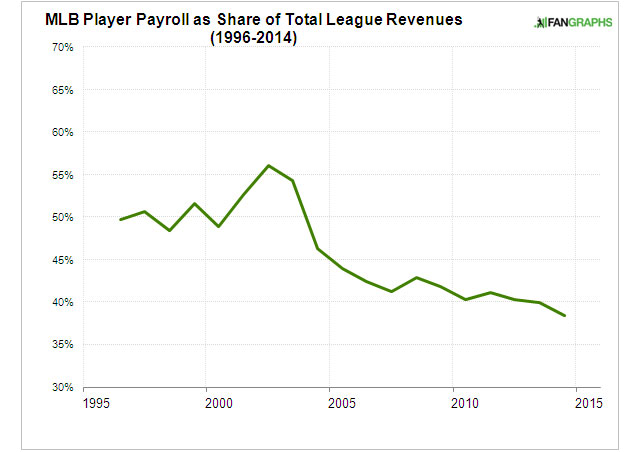Major league salaries and revenues: A glimpse into the dynamics of the new gilded age at the high end

Over the past 50 years, the average major league salary has increased, in real, inflation-adjusted dollars, by about 40-fold. The average major league salary was $108,280 (2015$) in 1965, and is about $4.25 million this year.
(The median salary is currently about one third of the mean. Before the free agent boom the median was about three quarters of the mean).
Here’s a statistic that could pierce the heart of a Koch brother like an icy-cold dagger: Next season, Zack Greinke’s salary will be essentially equivalent, in inflation-adjusted terms, to the entire National League player payroll in 1968. (The average MLB salary was $141,000 in 1968, again in 2015 dollars, and there were 250 roster spots in the NL that year, meaning that the NL’s total payroll was about $35 million).
On the other hand, major league owners aren’t exactly having to make Thursday Kraft Mac & Cheese night or anything:

So while major league players as a class — protected as they are by one of the last powerful unions in the USA — have been making bank, their employers have been doing even better. In other words, ideally-organized employees, who have a skill shared at any one time by only a few hundred people, and which generates more than $9 billion of revenue a year, have been losing considerable ground in regard to the division of that revenue to the capitalists who employ them. That in its own not so small way is a comment on the essence of the new gilded age.



